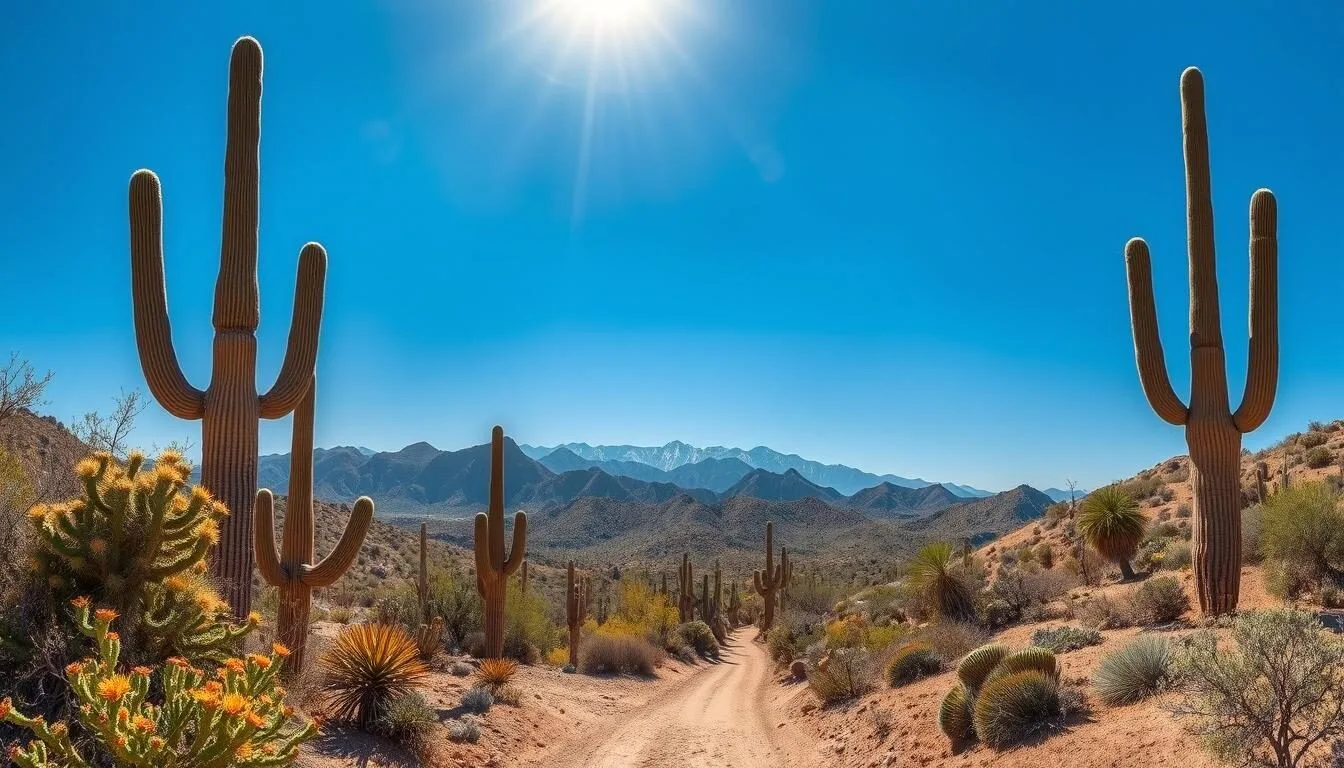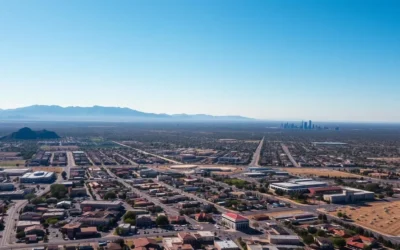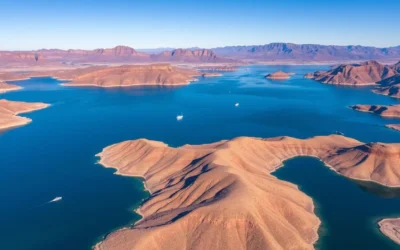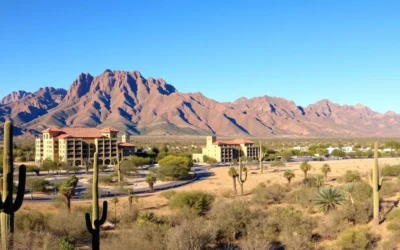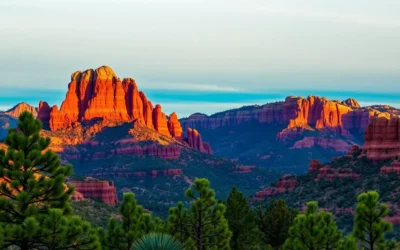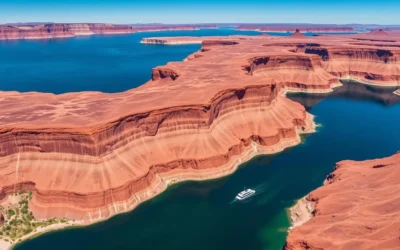✓ Accommodations✓ Flights✓ Rental Cars✓ Tours & Activities
Did you know that Tucson’s desert climate offers a unique blend of extreme heat and mild winters, making it a fascinating destination throughout the year? With temperatures ranging from 42°F to 102°F, the city’s climate is as varied as it is vibrant.
As you plan your trip, you’ll discover why Tucson’s weather is a major draw for travelers seeking to escape colder climates or experience the desert in bloom. The best time to visit depends on your preferences, whether you’re looking for hot-weather activities or milder conditions.
We’ll guide you through the temperature patterns, precipitation levels, and seasonal events that make certain months ideal for different types of travelers, ensuring you’re prepared for a weather-savvy trip.
Understanding Tucson’s Desert Climate
Understanding the desert climate of Tucson is crucial for planning a weather-savvy trip. Tucson’s unique geography plays a significant role in shaping its climate. The city’s elevation and surrounding mountain ranges create a complex weather pattern that is both fascinating and challenging to navigate.
Climate Characteristics
Tucson’s desert climate is characterized by low humidity and high temperatures during the summer months. However, its elevation of approximately 2,400 feet above sea level contributes to slightly cooler temperatures compared to lower-lying desert areas. The surrounding mountains, including the Santa Catalina Mountains, which rise to over 9,000 feet, create microclimates around the city.
| Elevation | Temperature | Climate Conditions |
|---|---|---|
| 2,400 feet | Milder temperatures | Desert climate with low humidity |
| 9,000 feet (Santa Catalina Mountains) | Cooler temperatures | Mountainous climate with potential for snowfall |
Elevation’s Impact on Weather
The elevation of Tucson and its surrounding mountains significantly affects the local weather patterns. As elevation increases, the temperature drops, offering visitors a range of options for cooling off during hot periods. The change in elevation also influences precipitation patterns, wind conditions, and overall climate comfort throughout the year.
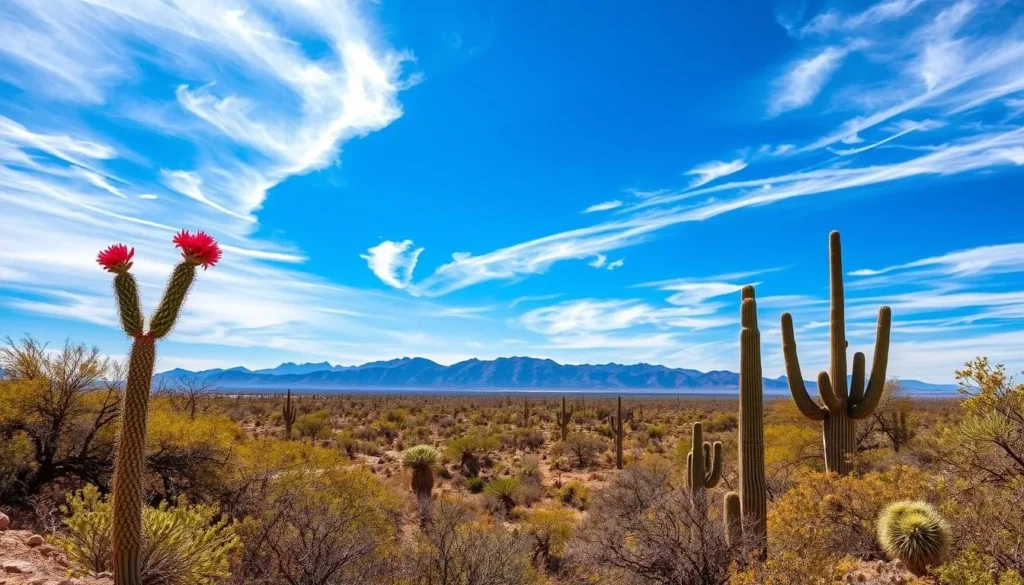
By understanding how Tucson’s elevation and geography impact its climate, you can better plan your trip and make the most of your time in this beautiful desert city.
Seasonal Overview: What to Expect Year-Round
As you plan your trip to Tucson, it’s essential to grasp the seasonal overview to make the most of your visit. Tucson’s desert climate is characterized by distinct seasonal patterns that significantly impact the weather conditions throughout the year.
The temperature in Tucson varies greatly across different seasons. Winters are mild, with average highs in the 60s and 70s Fahrenheit, while summers are hot, often reaching over 100 degrees Fahrenheit. Spring and fall offer pleasant temperatures, making them ideal for outdoor activities.
Temperature Patterns Throughout the Year
Tucson experiences a wide range of temperatures across the year. During the winter months (December to February), the average high temperature is around 73°F, while in the summer (June to August), it can soar to around 102°F. Spring (March to May) and fall (September to November) have mild temperatures, ranging from 75°F to 90°F, making these periods ideal for outdoor exploration.
Precipitation and Humidity Levels
Tucson’s weather is also influenced by its distinct monsoon season from June to September, with August being the wettest month. The rainfall during this period can lead to dramatic thunderstorms and increased humidity. Conversely, the dry season from October to June is characterized by low humidity and minimal rain. Understanding these conditions is crucial for planning your activities and ensuring a comfortable trip.
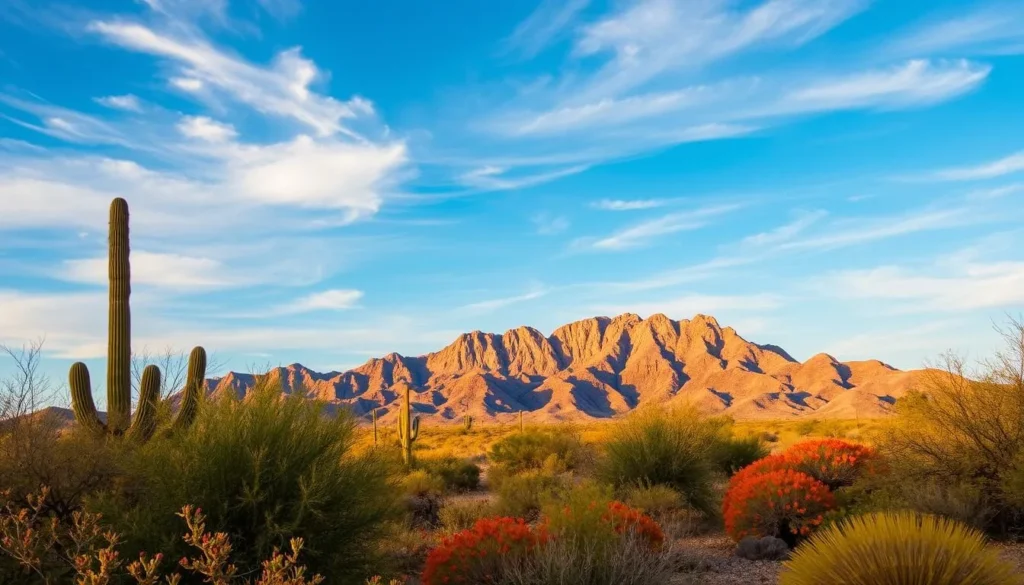
By understanding Tucson’s unique weather conditions and how they vary across different seasons, you can better plan your trip and make the most of your time in this beautiful desert city.
Winter in Tucson: December Through February
Winter in Tucson, Arizona, is a time of mild days and cool nights, making it an ideal destination for outdoor enthusiasts. This season, which spans from December to February, is considered the peak tourist season in Southern Arizona.
Mild Winter Days and Cool Nights
Tucson’s winter is characterized by pleasant temperatures, with average highs often reaching the mid-70s to low 80s Fahrenheit (23-27°C). Cool nights require light jackets, but overall, the weather is conducive to outdoor exploration. It’s the best time of year to enjoy nature without the harsh conditions found in other parts of the country.
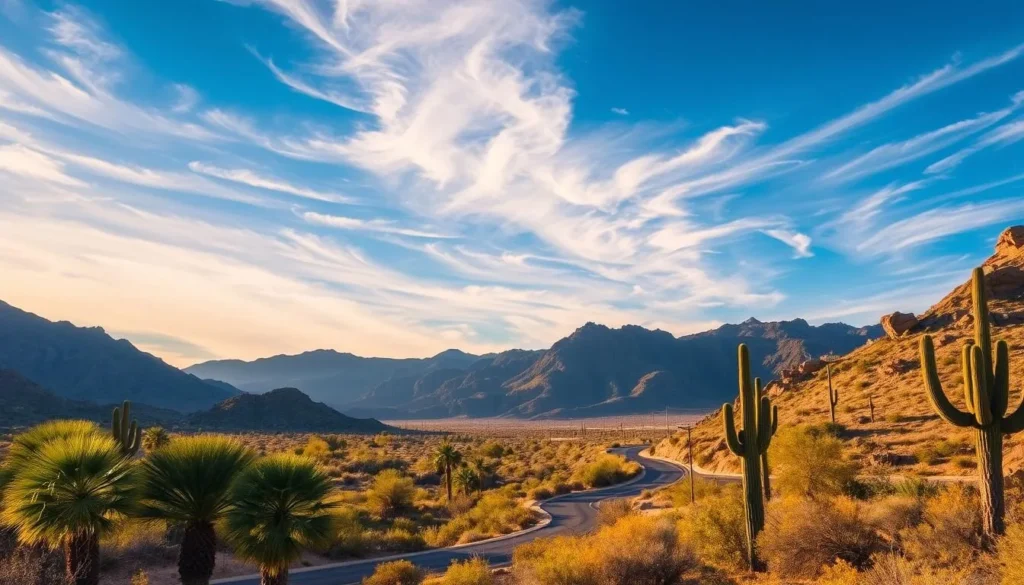
Winter Activities and Attractions
During the winter months, Tucson offers a variety of activities and attractions. Visitors can enjoy hiking in Saguaro National Park, golfing on world-class courses, and bird watching as migratory species make the area their temporary home. The comfortable weather also makes it an ideal time for outdoor activities like exploring Sabino Canyon.
| Activity | Location | Best Time |
|---|---|---|
| Hiking | Saguaro National Park | December to February |
| Golfing | Various Golf Courses | Winter Months |
| Bird Watching | Sabino Canyon | January |
Tucson also hosts various cultural events and festivals during the winter, adding to its appeal as a tourist destination. Whether you’re looking for outdoor adventures or cultural experiences, Tucson in the winter is an excellent choice.
Spring Bloom: March Through May
With the onset of spring, Tucson becomes an ideal destination for outdoor enthusiasts. The season brings mild and pleasant temperatures, making it the perfect time for outdoor activities.
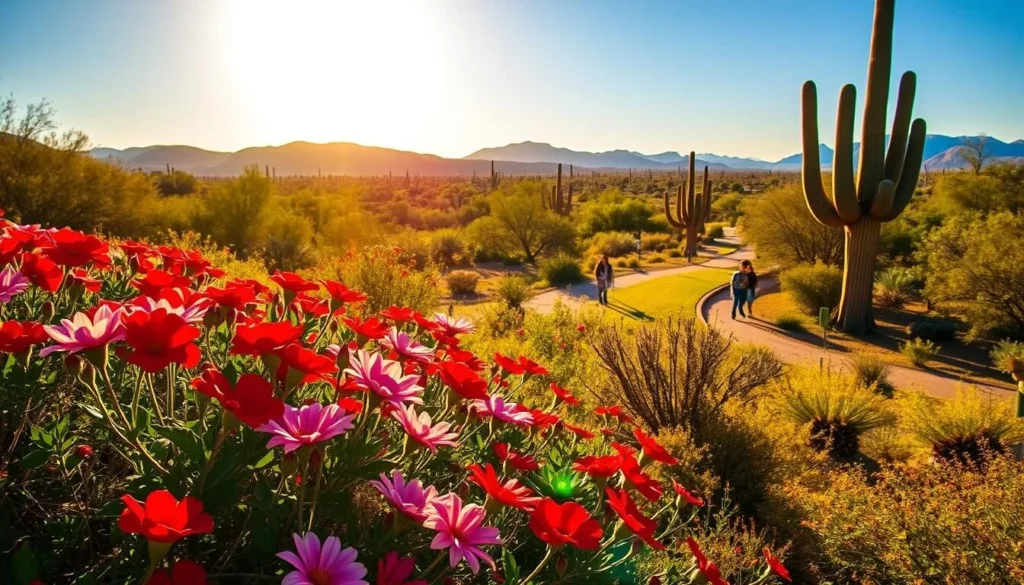
Desert Wildflower Season
During spring, Tucson’s desert landscape transforms into a colorful tapestry. The desert wildflower season is a major attraction, with various species blooming across the region. You can explore the beautiful flora in numerous parks and natural areas.
| Location | Wildflower Species | Best Time to Visit |
|---|---|---|
| Saguaro National Park | Saguaro, Teddy Bear Cholla | Late March to Early May |
| Tucson Mountain Park | Desert Marigold, Globe Mallow | Mid-March to Late April |
Spring Events and Outdoor Opportunities
Spring in Tucson is not just about natural beauty; it’s also a time for various events and activities. You can participate in the Tucson Festival of Books, one of the largest literary festivals in the country, or enjoy outdoor concerts and cultural celebrations. The pleasant spring weather makes it an ideal period for hiking, mountain biking, and rock climbing before the summer heat sets in.
Summer Heat: June Through August
Tucson’s summer is known for scorching temperatures, yet early mornings and evenings offer a respite. During this time, the desert landscape transforms, offering unique opportunities for exploration and enjoyment.
Navigating the Desert Summer
To make the most of your summer visit, it’s essential to plan around the heat. The midday sun can be intense, so scheduling outdoor activities for early morning or evening is advisable. This approach not only helps you avoid the peak heat but also allows you to experience the desert’s serene beauty during the cooler parts of the days.
| Time of Day | Recommended Activities | Temperature Range |
|---|---|---|
| Early Morning | Hiking, Wildlife Watching, Photography | 70-85°F |
| Evening | Stargazing, Outdoor Dining, Nighttime Tours | 80-95°F |
Early Morning and Evening Activities
You’ll find that the early morning hours, before 9 AM, become the prime time for outdoor activities during Tucson’s summer months. The mild temperatures and beautiful light make it ideal for scenic hikes and photography. As the days cool down in the evening, activities like stargazing and outdoor dining become popular, offering a wonderful way to enjoy the desert landscape.
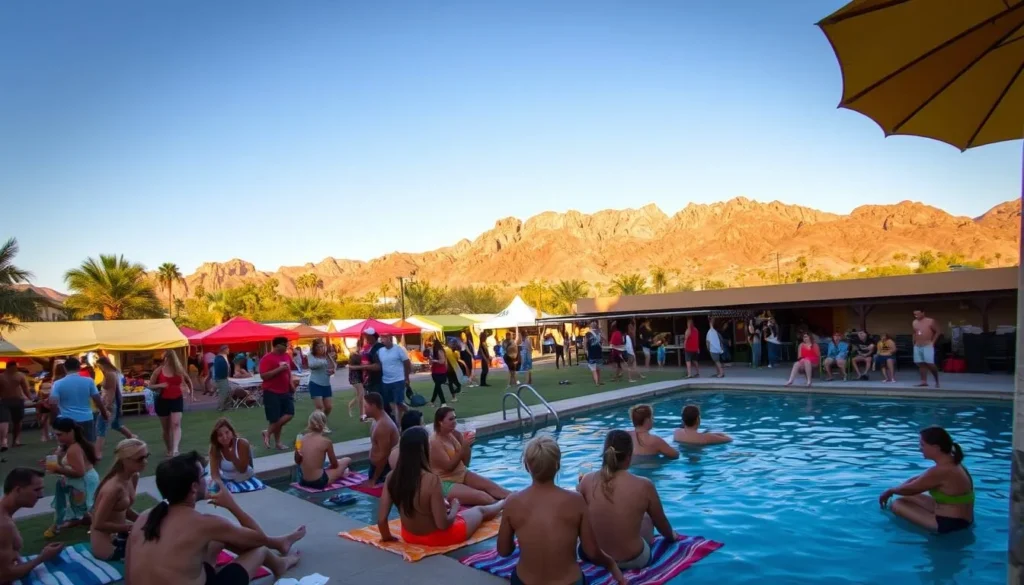
Monsoon Season: What to Expect
The monsoon season is a time of dramatic weather shifts in Tucson, offering both breathtaking beauty and potential hazards. As the summer months progress, the desert landscape becomes a stage for intense storms that can bring heavy rain and strong winds.
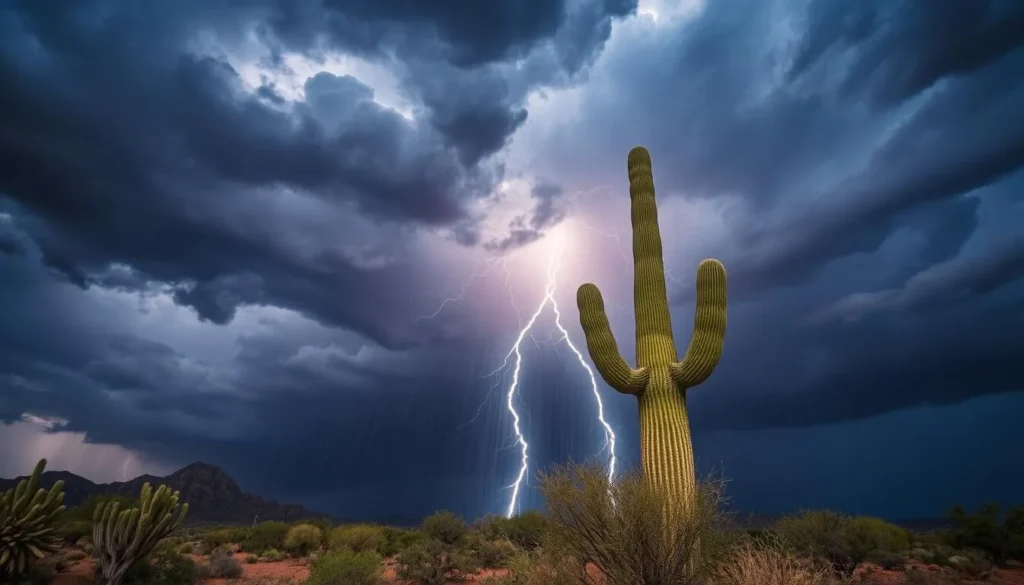
The Beauty and Drama of Desert Storms
Monsoon storms can be awe-inspiring, with towering thunderheads and spectacular lightning displays. These storms are a crucial part of the desert ecosystem, bringing much-needed rain to the area and replenishing water sources.
During this season, the desert comes alive with activity, as plants bloom and animals become more active. The storms themselves can be a thrilling experience, with the sound of thunder and the smell of wet earth filling the air.
Safety Tips During Monsoon Season
While monsoon storms can be beautiful, they also pose significant risks. It’s essential to stay informed about weather conditions and follow safety guidelines when venturing out during this time. Here are some key safety tips:
- Seek shelter immediately if you encounter a storm, avoiding open areas and tall objects.
- Be aware of the risk of flash flooding in washes and low-lying areas.
- Keep an eye on weather forecasts and warning signs that indicate an approaching monsoon storm.
- Exercise caution when driving during monsoon conditions, as reduced visibility and flooded roadways can be hazardous.
By being prepared and staying informed, you can enjoy the beauty of monsoon season while minimizing your exposure to its risks.
Fall Splendor: September Through November
Tucson’s fall season, spanning from September to November, brings a welcome respite from the summer heat. The comfortable temperatures and clear skies make it an ideal time for outdoor activities and cultural events.
Cooling Temperatures and Clear Skies
As fall sets in, the desert landscape transforms with cooling temperatures, making the days perfect for exploration. You can enjoy the beautiful weather by visiting attractions like Saguaro National Park or taking a leisurely hike in the surrounding mountains. The pleasant climate during this period makes it the best time to appreciate Tucson’s natural beauty.
Fall Festivals and Events
Fall in Tucson is full of exciting events and festivals, particularly from September to November. Notable events include the Tucson Meet Yourself cultural festival, which celebrates the region’s diverse food and cultural traditions. You can also look forward to various outdoor concerts, art fairs, and community gatherings that take advantage of the pleasant weather. These activities make fall a vibrant and enjoyable season in Tucson.
| Event | Description | Date |
|---|---|---|
| Tucson Meet Yourself | Celebration of diverse cultural traditions | October |
| Arizona-Sonora Desert Museum Events | Special autumn events and exhibitions | September – November |
| Tohono Chul Park Events | Autumn events and nature walks | September – November |
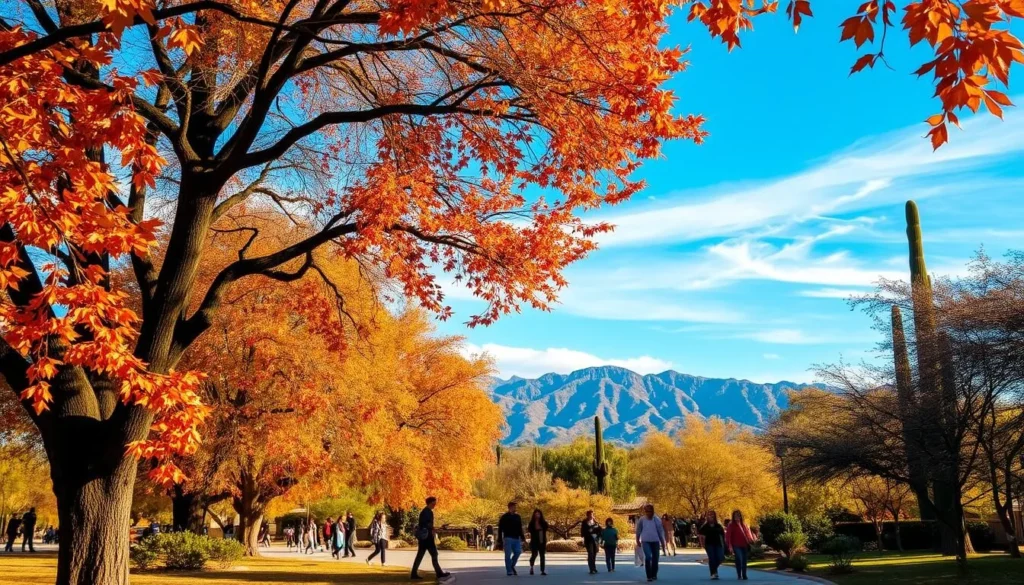
Tucson, Arizona: Best Months for a Weather-Savvy Trip
The best time to visit Tucson depends on what you’re looking for. With its unique desert climate, Tucson offers a variety of experiences throughout the year.
Prime Months for General Tourism
For most visitors, the prime months for general tourism in Tucson are during the spring (March-May) and fall (September-November). These periods offer ideal conditions for outdoor activities like hiking and exploration, with mild temperatures and fewer crowds. Spring brings the beautiful desert wildflowers, making it a particularly attractive time to visit.
During the fall, the temperatures cool down, and the clear skies make it perfect for stargazing and enjoying the outdoors. Both seasons are ideal for exploring Saguaro National Park and other natural attractions.
Balancing Weather Preferences with Activities
When planning your trip, it’s essential to balance your weather preferences with the activities you have planned. If you’re looking for golf, tennis, and desert tours, winter might be the best time for you, with comfortable temperatures and plenty of sunshine.
For those who don’t mind the heat, summer can be a great time to enjoy early morning desert experiences, pool time, and lower hotel rates. The monsoon season, which typically occurs from July to September, offers unique photography opportunities with dramatic desert storms.
By considering your interests and the activities you want to enjoy, you can choose the best time to visit Tucson and make the most of your trip.
Outdoor Adventure Planning by Season
The key to a successful outdoor adventure in Tucson lies in understanding the seasonal variations in weather and activities. Tucson’s climate is characterized by mild winters and hot summers, with distinct seasonal patterns that influence outdoor recreation.
Hiking and Desert Exploration
Tucson is renowned for its hiking trails and desert landscapes, making it an ideal destination for outdoor enthusiasts. The best time for hiking is from October to April, when temperatures are mild and comfortable. During these months, you can explore the beautiful Saguaro National Park and other desert landscapes without the intense summer heat.
- Enjoy mild winter days perfect for long hikes
- Experience the beauty of spring wildflowers
- Take advantage of the comfortable fall weather for desert exploration
Cycling, Golf, and Other Outdoor Sports
Tucson is a haven for cyclists, with many professional teams training there during the winter months. The best time for cycling is from October through April, when the weather is cool and pleasant. Golf is popular year-round, though summer rounds typically start early in the morning to avoid the heat. Other outdoor sports like tennis and pickleball are best enjoyed during the cooler months from October through May.
- Cycle through Tucson’s scenic routes during the mild winter and spring
- Play golf year-round, with early morning tee times in the summer
- Enjoy tennis and pickleball during the cooler months
Visiting Tucson’s Top Attractions: Weather Considerations
To make the most of your visit to Tucson, consider the weather when exploring its top attractions. The desert climate can be challenging, but with some planning, you can have a great experience.
Saguaro National Park: When to Visit
Saguaro National Park is a must-visit attraction in Tucson. The best time to visit is from October to May when the weather is mild, making it ideal for hiking and exploring the park’s stunning landscapes.
Arizona-Sonora Desert Museum and Other Outdoor Sites
The Arizona-Sonora Desert Museum is best visited in the morning hours, especially during warmer months. Other popular outdoor attractions like Tohono Chul Park and the Tucson Botanical Gardens are most enjoyable from October through May when temperatures are moderate. Many outdoor attractions have adjusted summer hours, opening earlier to accommodate morning visits. This allows you to enjoy the weather and activities without the harsh desert sun.
By considering the season and planning your visit accordingly, you can maximize your experience at Tucson’s top attractions. Whether you’re visiting from Phoenix or staying local in Tucson, understanding the weather considerations will make your trip more enjoyable.
Budget-Friendly Travel Timing
Visiting Tucson doesn’t have to break the bank if you choose the right time to go. Understanding the city’s tourist seasons can help you save money while still enjoying all that Tucson has to offer.
Off-Season Deals and Discounts
During the off-season, typically the summer months, you can find significant discounts on accommodations and tourist attractions. While the heat can be intense, the savings can be substantial.
- Many hotels and resorts offer special promotions and packages during the off-season.
- You can enjoy lower rates at popular attractions and restaurants.
- The summer months are ideal for those who don’t mind the heat and are looking for a budget-friendly vacation.
| Season | Average Temperature | Average Accommodation Price |
|---|---|---|
| Off-Season (Summer) | 95°F (35°C) | $80/night |
| Shoulder Season (April-May & Sept-Nov) | 75°F (24°C) | $120/night |
| Peak Season (Winter) | 60°F (16°C) | $180/night |
Shoulder Season: The Perfect Balance
The shoulder seasons, which include September to early November and April to May, offer an excellent balance between pleasant weather and lower prices. During these periods, you can enjoy comfortable temperatures, fewer crowds, and moderately priced accommodations.
October and April are particularly popular as they combine near-perfect weather with reasonable rates, making them ideal for visitors who want to experience the best of Tucson without the peak season prices.
Packing Tips for Tucson’s Variable Climate
When planning your trip to Tucson, Arizona, it’s crucial to consider the variable climate. Tucson’s weather can be quite unpredictable, with significant changes in temperature throughout the year.
Essential Items Year-Round
Regardless of when you visit, there are some essentials to include in your packing list. Sun protection is vital, given the intense desert sun. You’ll need sunscreen, a hat, and sunglasses to protect yourself from the sun’s strong rays.
Seasonal Packing Considerations
For winter visits (December-February), pack layers, including light jackets and long pants for cool evenings. Spring and fall require similar moderate-weather clothing with layers for temperature changes. Summer visitors should pack lightweight, breathable clothing, swimming attire, and extra sun protection. Consider bringing a light rain jacket during monsoon season (July-September).
| Season | Weather Conditions | Packing Essentials |
|---|---|---|
| Winter (Dec-Feb) | Cool evenings, mild days | Layers, light jackets, long pants |
| Spring (Mar-May) | Mild temperatures, potential for sudden changes | Moderate clothing, layers |
| Summer (Jun-Aug) | Hot, intense sun | Lightweight, breathable clothing, sun protection |
| Monsoon Season (Jul-Sep) | Potential for sudden rain | Light rain jacket, quick-drying clothing |
Conclusion
Tucson’s climate varies significantly throughout the year, providing a range of experiences for visitors. As you’ve learned, each season offers unique advantages, from mild winters to vibrant spring blooms, dramatic summer monsoons, and pleasant autumns. The best time to visit depends on your preferences for weather and activities. Generally, the period from October to April offers the most comfortable weather for most visitors in the United States. However, with proper planning, any time of year can be a great time to visit. By understanding Tucson’s climate patterns, you can choose the best times for your trip, balancing factors like budget and crowd levels. Whether you’re heading to one of the United States’ most distinctive desert destinations, you’re now equipped to plan a time visit that aligns with your ideal climate preferences and vacation goals, making your trip to Tucson truly unforgettable in the United States.
The above is subject to change.
Check back often to TRAVEL.COM for the latest travel tips and deals.
